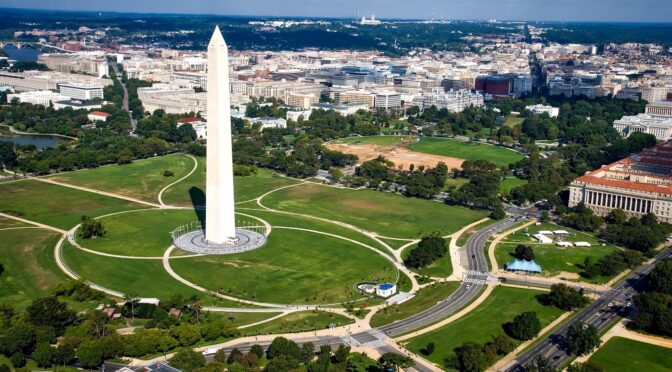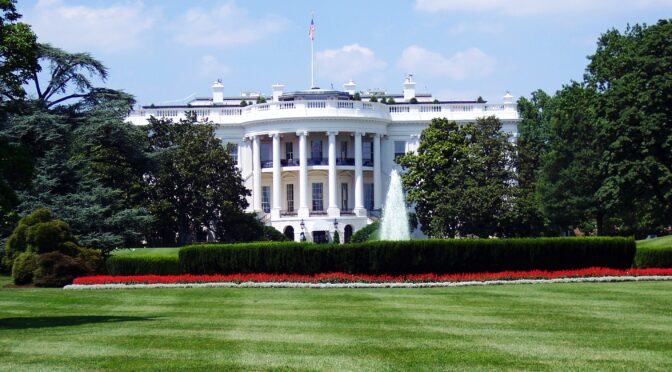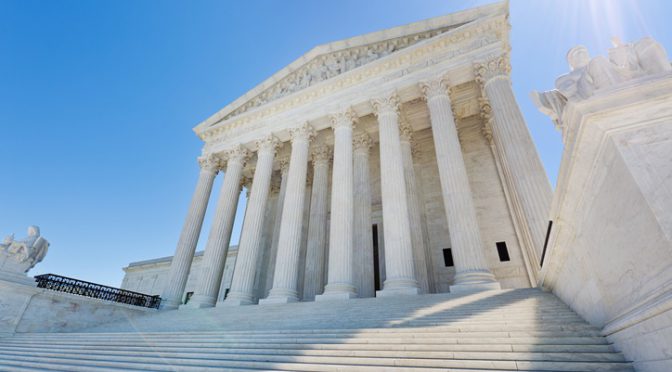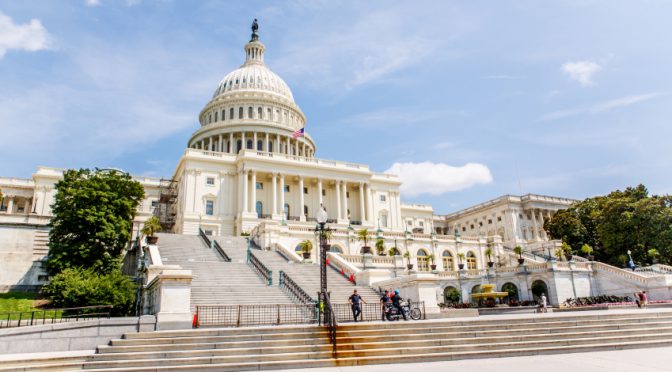By Sean Robins, NACAC’s director of advocacy
Welcome to another issue of the Advocacy Update on NACAC’s Admitted blog. As we head into the holiday weekend and the start of a new academic year, I want to pause and recognize the extraordinary work you do every day to support students. These first weeks of the school year bring renewed energy, but they also highlight the challenges and uncertainties that shape our profession. With only weeks until the government faces another potential shutdown, we are watching closely as Congress prepares to return next week. The stakes are high, and the policies under consideration will have a direct impact on college access, affordability, and the work of counselors across the country. NACAC is committed to keeping you informed, elevating your voices, and ensuring that the needs of students remain at the center of the national conversation.
Policy & Legislative Updates
The Supreme Court recently issued a 5-4 ruling allowing the Trump administration to stand by its decision to cut nearly $800 million in National Institutes of Health (NIH) grants, many of which supported research on diversity, equity, inclusion, gender identity, and COVID. While researchers and public health advocates view the decision as a major setback, the court did leave in place a lower court ruling that found NIH directives unlawful, preventing additional grant terminations under those rules. Researchers now must seek relief through the Court of Federal Claims rather than federal district courts, adding layers of complexity and delay for programs already facing disruption.
Meanwhile, the University of Missouri canceled a long-standing back-to-school block party organized by its Black student group, citing concerns that the event name suggested “unlawful discrimination.” This action is part of a broader national trend, where institutions under pressure from the Trump administration are scaling back diversity, equity, and inclusion initiatives, cultural events, and programs supporting students of color. Students and advocates warn that these decisions erase critical spaces for belonging and support, risking student success and retention at a time when reports of campus racism are rising.
Financial pressures are also shaping admission decisions. With declining international enrollment, universities including Stanford, Duke, Harvard, and Rice are making unusually late offers to wait-listed students, often accompanied by financial incentives, mere weeks before classes begin. Foreign enrollment is projected to drop by as much as 30 percent this fall, and these late admissions highlight the instability created by restrictive federal immigration and higher education policies. Institutions are trying to fill revenue gaps and stabilize budgets, but the scramble underscores systemic vulnerabilities in the U.S. higher education system.
The Trump administration is refusing to defend a federal program that provides $350 million in grants to Hispanic Serving Institutions (HSIs). This refusal signals an intent to dismantle federal aid tied to student demographics, putting at risk programs that support Predominantly Black Institutions, and Asian American, Native American, and Pacific Islander Serving Institutions. While Congress legally established these designations, the court case could determine the future of essential funding for colleges serving large populations of minority students. The Hispanic Association of Colleges and Universities (HACU) has filed to intervene and defend HSIs, which supports campuses where at least 25 percent of students are Hispanic.
Undocumented students are facing sudden tuition hikes and uncertain futures, particularly in Texas, where longstanding in-state tuition policies were abandoned under pressure from the Justice Department. Within hours of a federal judge’s ruling, students were shut out of the process, leaving colleges scrambling just days before classes began. Similar lawsuits are now underway in Oklahoma, Kentucky, and Minnesota, aiming to restrict tuition access for undocumented students nationwide. Advocates warn that these actions will derail educational trajectories, harm state economies, and create chaos for campus staff charged with determining legal residency for tuition purposes.
Student aid processes are also under stress. A group of Democratic senators are pressing Education Secretary McMahon to reverse changes that make it harder for students and borrowers to file financial aid complaints, accusing the department of burying and complicating the process. Nearly 289,000 complaints were filed in 2024, and lawmakers are urging the department to streamline procedures and restore staffing to ensure students receive timely support. Compounding these challenges, new identity verification requirements flagged an additional 300,000 students for review this summer, adding to an existing backlog of 125,000. Financial aid officers worry that manual processes may delay or block aid for eligible students at a critical time, especially for low-income populations.
Programs that directly support underserved students are also at risk. The administration has already revoked over $13 million in TRIO funding, cutting essential support for low-income and first-generation college students. GEAR UP programs serving more than 250,000 students nationwide remain in limbo, waiting on continuation awards. Without Congressional intervention before Oct. 1, staff layoffs, program shutdowns, and lost opportunities for students and families with disabilities are imminent. These programs are vital pipelines for higher education access, and their disruption threatens decades of progress for students who rely on these supports.
Public Service Loan Forgiveness (PSLF) is offering a glimmer of hope for borrowers, as a wave of “golden letters” signals relief is still possible. Yet, major challenges remain, including backlogs of more than 72,000 buyback applications, miscounted payments, and new regulations that could restrict forgiveness for entire groups of public service employees. While some borrowers are seeing progress, millions still face uncertainty about the program’s future.
States are also preparing to implement Workforce Pell following its passage in One Big Beautiful Bill Act (OBBBA), but a new report indicates significant variation in capacity to track short-term, noncredit programs. States must strengthen data systems, align programs with credit pathways, and address gaps in labor market outcome tracking to ensure students can access these funds when they become available next year.
Finally, the administration’s approach to international students is creating additional uncertainty. While Trump recently praised Chinese students and promised to welcome 600,000 to U.S. campuses, restrictive visa policies and heightened scrutiny are already forcing many students to defer enrollment or shift to online programs. NAFSA estimates international enrollment could drop by up to 40 percent this year, with consequences for teaching, research, and local economies. Colleges are attempting to provide flexibility, but systemic instability continues to threaten the U.S.’s position as a destination for global talent.
Across the development, the Trump administration’s policies are reshaping access to higher education, financial aid, and federal research support, disproportionately affecting students of color, low-income students, undocumented students, and international students. These actions, from grant cancellations to visa delays, create urgent challenges for institutions, educators, and policymakers who are committed to equitable access, student success, and the nation’s role as a global education leader.
NACAC Advocacy
NACAC remains a steadfast advocate for our members, working to ensure that federal policies support students and the counseling profession. As Congress prepares to return next week, our team is actively monitoring newly proposed rules from the administration and coordinating with partners to develop a strong, collective response. These proposals could significantly affect college access, affordability, and student success.
Our advocacy efforts are also central to NACAC Conference 2025 in Columbus, Ohio. The conference will provide numerous opportunities to stay informed and engaged. I will also be presenting at conference to share insights on legislation, funding initiatives, and regulatory changes that impact college access and affordability. These updates will equip you with actionable insights to advocate effectively both on your campus and in your community.
Through these efforts, NACAC is committed to providing you with the tools, knowledge, and support necessary to navigate a rapidly changing policy landscape. Together, we can shape policies that expand opportunity, safeguard access, and reinforce the vital role of counselors in higher education.
Ways You Can Take Action
We are continuously updating our Take Action page with opportunities to make your voice heard. If you have not already, I encourage you to advocate on the urgent issues below. You can also view all active advocacy campaigns in the yellow column of the Take Action page.
- Tell Congress: Save TRIO and Support College Access
- Tell Congress: Prioritize Visa Appointments for International Students and Scholars
- Urge Congress to Protect Postsecondary Pathways
- Tell Congress: International Students are Essential to America’s Safety, Economy, and Global Strength
- Tell Congress to Not Abandon Our National Commitment to Education
- Urge Congress to Protect Disabled Students
- Don’t Flunk the Future Advocacy Toolkit
As we move into September and face both new challenges and opportunities, I am reminded of the words of civil rights leader John Lewis: “If you see something that is not right, not fair, you just have to speak up. You have to say something; you have to do something.”
Let us carry that resolve into our advocacy and into our daily work with students, knowing that together, we can dismantle barriers and create meaningful pathways to opportunity.




